Early Versus Traditional Oral Hydration after Cesarean Section
Karim Ahmed Wahba, Bassem Aly Islam and Mohamed Hassan*
Department of Obstetrics and Gynecology, Faculty of Medicine, Ain Shams University
*Address for Correspondence: Mohamed Hassan, Department of Obstetrics and Gynecology, Faculty of Medicine, Ain Shams University, Egypt, Tel: +201-223-698-804, ORCiD: https://orcid.org/0000-0002-6810-6261; E-mail: [email protected]
Submitted: 03 August 2018; Approved: 10 August 2018; Published: 14 August 2018
Citation this article: Wahba KA, Islam BA, Hassan M. Early Versus Traditional Oral Hydration after Cesarean Section. Int J Reprod Med Gynecol. 2018;4(2): 052-058.
Copyright: © 2018 Hassan M, et al. This is an open access article distributed under the Creative Commons Attribution License, which permits unrestricted use, distribution, and reproduction in any medium, provided the original work is properly cited
Keywords: Early oral hydration; Cesarean section; Early recovery
Download Fulltext PDF
Background: Traditionally, Patients are not given fluids or food after abdominal surgery until bowel functions returns, as by bowel sounds, passage of flatus or stool, or a feeling of hunger, Early versus Traditional oral hydration have been studied to evaluate prospectively the benefits and safety of early hydration on bowel movement after Cesarean Section.
Aim of the work: To evaluate prospectively the benefits and safety of early hydration on bowel movement after Cesarean Section.
Patients and methods: The current study was carried out at Ain Shams University Maternity Hospital on (290) pregnant women with term singleton pregnancy, uncomplicated Elective LSCS, time of CS doesn’t exceed 90 Minutes, average blood loss during and after CS (doesn’t exceed 1000cc), All patients will be under spinal anesthesia, during a period from March 01, 2018 to June 30, 2018.
Results: The current study showed that among study groups: time to first intestinal sounds and time to first bowel movement were significantly shorter in early group (3.8 ± 1.0 and 10.0 ± 1.9, respectively), compared to (8.1 ± 1.7 and 15.0 ± 2.1, respectively) in traditional group. Also, amount of given IV fluids was significantly lower (2000 ml) compared to (3250 ml) in traditional group. Pain perception was significantly lower in early group compared to traditional group (3.8 ± 0.8 and 4.5 ± 0.9, respectively). Also, postoperative hospital stay was significantly shorter in early group than traditional group (11.6 ± 1.7 and 16.5 ± 2.2, respectively). Among patients with early hydration 16 cases (11%) needed extra analgesics, 42 cases (29%) suffered from anorexia, 39 cases (26.9%) suffered from nausea, 34 cases (23.4%) suffered from vomiting, 12 cases (8.1%) suffered from abdominal distension, While among the traditional group, 22 cases (15.2%) needed extra analgesics, 35 cases (24.1%) suffered from anorexia, 32 cases (22.1% suffered from vomiting, 27 cases (18.6%) suffered from vomiting, 25 cases (17.2%) suffered from abdominal distension.
No cases of paralytic ileus had been recorded among study groups.
Conclusions: Early oral hydration after C.S was beneficial and safe on bowel movement, as it was associated with faster return of bowel sounds, shorter time to bowel movement, less pain perception, higher satisfaction, less post-operative distension and earlier hospital discharge.
Recommendations: Early oral hydration can be conducted safely after caesarean delivery. More population should be investigated for more global evaluation.
Introduction
Cesarean delivery is defined as the birth of a fetus through incisions in the abdominal wall (laparotomy) and the uterine wall (hysterotomy). This does not include removal of the fetus from the abdominal cavity in the case of rupture of the uterus or in the case of an abdominal pregnancy [1].
According to the latest data from 150 countries, currently 18.6% of all births occur by CS, ranging from 6% to 27.2% in the least and most developed regions, respectively. Based on the data from 121 countries, the trend analysis showed that between 1990 and 2014, the global average CS rate increased 12.4% (from 6.7% to 19.1%) with an average annual rate of increase of 4.4% [2].
Women can have cesarean sections for many reasons such as multiple pregnancy, failure of labor to progress, concern for the baby, problems with the placenta, large baby, breech presentation, maternal infections such as human immunodeficiency virus or herpes, maternal medical conditions such as diabetes or high blood pressure, Maternal request for CS [3].
Traditionally, patients are not given fluids or food after abdominal surgery until bowel function returns, as evidenced by bowel sounds, passage of flatus or stool, or a feeling of hunger [4].
The rationale of this practice is to prevent postoperative nausea, vomiting, distention and other complications. However, withholding oral feedings may lead to intestinal ileus, which can prolong the length of hospital stay and increase the financial burden [5].
Although cesarean section is a major abdominal surgery, it is different from other abdominal surgeries. Usually the patients are young and in a good health condition. In the past, CS was believed to be equivalent to other major abdominal surgeries and its postoperative management was following similar lines. It was believed that CS limits bowel mobility; thus; a postoperative ileus was feared to be of common incidence. Hence, starting oral feeding will interfere with bowel functions and this belief wasn’t only prevalent among the public but even the medical staff believed the same [6].
Different factors affect patient’s satisfaction. The secure of patient needs is a main factor to improve quality of medical services. Postoperative care and satisfaction of women who underwent a cesarean section is an important aspect and demands due attention, because they are different from other patients and don’t have just the role of a patient, actually they are mothers that should care and breast feed their infant immediately after surgery. Some previous studies have shown early post cesarean feeding is a main factor in women’s satisfaction [7].
Early oral feeding is claimed to improve patients’ satisfaction, helps in early mobilization and results in shortened hospital stay. Cost of oral feeding is much less than the daily cost of intravenous fluids, intravenous sets, cannulas and nursing care [8].
Enhanced Recovery (ER) is also known as ‘fast track’, ‘rapid’ or ‘accelerated recovery’. ER is a model of care for elective surgery, combining elements of care to form a pathway which reduces the physiological stress response and organ dysfunction due to surgery.
The implementation of ER is associated with improved quality of life following surgery, compared to traditional pathways [9].
ERAS pathway for elective caesarean section [10].
• Improved pre-operative information
• Reduced pre-operative fasting
• Facilitate resumption of oral diet and cessation of IV fluids
• Improved satisfaction with analgesia
• Women Offered the Opportunity to Mobilize and have their urinary catheter and IV cannula removed on the day of their operation
• Be discharged on the day after surgery.
Patients and Methods
This study was carried out at Ain Shams University Maternity Hospital on (290) pregnant women during a period from March 01, 2018 to June 30, 2018.
Inclusion criteria
Term singleton pregnancy, uncomplicated Elective LSCS, time of CS doesn’t exceed 90 Minutes, average blood loss during and after CS (doesn’t exceed 1000 cc), all patients will be under spinal anesthesia.
Exclusion criteria
Patients with PPH, surgical complications, medical disorders such as DM and hypertension, patients having factors affecting blood loss as anemia, multiple pregnancy and patients who need tocolytic drugs.
Women recruited from the delivery ward of our hospital after they had received information on the purpose and course of the study from the medical investigator and had provided the written consent then they were subjected to detailed history taking and examination, routine lab tests as CBC, blood group and RH were performed as well.
The 290 participants were divided into two groups using simple random distribution technique, Group (A) “Early Group”: 145 patients orally hydrated with 200 ml of sugar free water within 1 hour of delivery, while Group (B) “Traditional Group” contained 145 patients who were orally hydrated with 200 ml of sugar free water 6 hours after delivery.
All patients were not subjected to intraoperative surgical irrigation practices. Analgesics reserved for postoperative pain control intraoperative analgesics use, No intraoperative analgesic were used and all patients were under spinal anesthesia.
All these contributed to eliminating the effect of these multi-factors upon postoperative oral intake and GIT side effects such as nausea, vomiting.
Primary outcomes as Audible intestinal sounds, Time to first bowel movement and Satisfaction measured with a Visual Analogue Scale (VAS) before being discharged.
Secondary outcomes as Postoperative anorexia, nausea, vomiting, Time for 1st breast feeding, Abdominal distension, Amount of given IV fluids, Need for pain analgesics and length of hospital stay.
Patients will be subjected post-operatively to full routine postoperative Follow-up.
Results
Figure 1 show that: Consort statement (patient flow chart).
Table 1 show that: No significant difference between hour-1 and hour-6 groups regarding demographic characteristics.
Table 2 and figure 2 show that: Time to first breast-feeding was non-significantly different among hour-1 and among hour-6 groups.
Table 3 and figures 3 show that: Time to first intestinal sounds was significantly shorter among hour-1 group than among hour-6 group.
Figure 4 show that: Kaplan-Meier curve for time to first intestinal sounds among the studied groups.
Table 4 and figure 5 show that: Time to first bowel movement was significantly shorter among hour-1 group than among hour-6 group.
Figure 6 show that: Kaplan-Meier curve for time to first bowel movement among the studied groups.
Table 5 and figure 7 show that: Amount of given IV fluid was significantly lower among hour-1 group than among hour-6 group. Table 6 and figure 8 show that: Pain perception was significantly lower among hour-1 group than among hour-6 group.
Table 7 and figure 9 show that: Postoperative hospital stay was significantly shorter among hour-1 group than among hour-6 group.
Figure 10 show that: Kaplan-Meier curve for postoperative hospital stay “time to discharge” among the studied groups.
Table 8 and figure 11 show that: Postoperative extra-analgesics were non-significantly less frequent among hour-1 group than among hour-6 group. Postoperative anorexia, nausea and vomiting were non-significantly more frequent among hour-1 group than among hour-6 group. Postoperative abdominal distension was significantly less frequent among hour-1 group than among hour-6 group.
Discussion
In the current study, there was no significant difference between the study Group A and the control Group B regarding the demographic data and obstetrical characteristics including (maternal age, BMI, Parity and Gestational Age and CS indications).
The current study demonstrated that women in the early hydration group had a more rapid return of bowel function including bowel sounds, with a substantially significant shorter mean postoperative time interval to the first bowel sounds (3.8 hrs ± 1.0) compared to (8.1 hrs ± 1.7) for the traditional hydration group. The difference between both groups regarding bowel sounds showed a statistically significant difference (p-value = < 0.001).
That explained the positive effect of early oral hydration on the gastrointestinal tract, where such early intervention may decrease the length of postoperative ileus. This finding was in line with many similar studies as Sahar and her colleagues [11] which was conducted upon 40 participants in King Fahd University Hospital at Al Khobar Saudi Arabia.
Sahar and her colleagues [11] defined study group as participants who received oral hydration after 2 hours postoperatively and the control group are those who initiated oral hydration 8 hours postoperatively and mentioned that the women in early hydration group had more rapid return of bowel sounds than the delayed hydration group.
Likewise Nasrin and her colleagues [12], Malhotra and her colleagues [13] conducted similar studies over 140 & 100 participants in Kemanshah University, Iran and Lady Hardinge Medical College and associated Hospitals, Delhi, India, respectively and agreed with those results.
There was statistically significant shorter time for first bowel movement among early oral hydration group (10.0 hrs ± 1.9) compared to (15.0 hrs ± 2.1) among traditional oral hydration. Sahar and her colleagues [11], Nasrin and her colleagues [12] also agreed to that.
As regards postoperative GIT findings among the studied groups such as postoperative anorexia, nausea and vomiting, they were non statistically significant more frequent among early hydration group than among traditional hydration group.
Group A showed 42 patients compared to 35 patients in group B complained of postoperative anorexia (p-value = 0.352), While 39 patients in Group A complained from nausea, Only 32 patients in Group B complained the same (p-value = 0.339), Group A also showed 34 patients complained of vomiting in comparison to 27 patients in Group B (p-value = 0.313).
Postoperative abdominal distension was statistically significant less frequent among Group A than Group B (8.3% in comparison to 17.2%, respectively), p-value = 0.022. There was no cases of paralytic ileus that has been recorded among both groups.
Similarly Cochrane review by Mangesi and his colleagues [14], which included 6 studies about oral intake after C.S and its effects on GIT, mentioned that the rate of gastrointestinal morbidity, including nausea and vomiting was not statistically significant different in the two studied groups of the most included studies. The 4 studies in the meta-analysis included total number of 484 patients, 234 Patients in early group and 250 patients in delayed group with p-value = 0.01.
In those studies, the early group was allowed to have fluids or food 24 hours after surgery, while the delayed group was only allowed to be orally fed after the first 24 hours had passed.
Watcha and his colleagues [15] studied postoperative nausea and vomiting and mentioned that postoperative nausea and vomiting complicates the lives of both patients and health care providers. While 23.4-29% of study group suffered from vomiting, nausea and anorexia in comparison to 18.6-24.1% of control group.
This agrees with Jeanne and her colleagues [16] who applied a prospective controlled trial of early postoperative oral intake following major abdominal gynecologic surgery found that vomiting, nausea and anorexia were more evident and frequent among the study group, that study was conducted upon 96 patients divided into 2 groups, early and delayed groups.
Oral intake was initiated among group 1 only after return of bowel functions, and group 2 were given clear liquid diet on day 1 postoperative, p-value = 0.04.
On the contrary, a study was conducted by Kramer and his colleagues [17] who studied the effect of immediate feeding of cesarean patients on the incidence of ileus, found that more complaints of vomiting, nausea and anorexia were found in the late feeding group.
Furthermore, as regards need for intravenous NSAIDs for postoperative analgesia during day 0 (the day of operation), it was noticed that no significant difference between both groups, this agrees with Patolia and her colleagues [18], as no significant difference between both groups according to given IV analgesia with (p-value = 0.269).
It was apparent that the number of IV fluids bottles given postoperatively till passage of flatus was statistically significant lower in Group A (4.1 bottles ± 1.0) which equals 2000 ML compared to Group B (6.5 bottles ± 0.7) which equals 3250 ml.
Breast feeding this study revealed that no statistically significant difference between the early hydration (hour 1) and traditional hydration (hour 6) groups. The results showed mean time of initiation of (39 mins ± 5.1) in Group A compared to (38.3 mins ± 4.8) in Group B.
However many factors affect initiation of lactation among both groups as NICU admissions, the ability of mother to lactate especially if being mum for the first time (breast feeding awareness) and the possibility of presence of local breast causes.
On the contrary Sahar and her colleagues [11], showed significant difference between the both groups (p-value = 0.001) with earlier time of initiation among early hydration group and this is due previously mentioned causes NICU admissions and local breast causes among traditional hydration group.
Taking in consideration, length of hospital stay was found to be statistically significant shorter in the early hydration group as evidenced by mean (11.6 hrs ± 1.7) compared to (16.5 hrs ± 2.2) among traditional hydration group with a statistically significant difference p < 0.001.
This finding seems to add another benefit of early oral hydration on hospital stay among the study group. Sahar and her colleagues [11] who studied early oral hydration after cesarean delivery performed under regional anesthesia found that the early hydrated group had significant shorter hospital stay, p = 0.007, also Patolia and her colleagues [18], agreed with the results, (49.5 hrs ± 12.7) in Group A compared with (75 hrs ± 12.3) among Group B, but they included 2 groups of 152 women (76 in each), one study group took oral sips of water 6 hours after CS, and the other group was restricted from oral fluid intake for the first 24 hours.
But disagrees with Andrew and his colleagues [19] who found that the average hospital stay was similar and not statistically significant in both groups as hospitalization was determined by the departmental protocol.
The previous findings could focus the light on the great role of the early oral hydration on reducing the length of hospital stay which leads to promote vacancy of beds for other patients and decreases economic burden.
A VAS (Visual Analogue Scale) was used with an easy question to evaluate satisfaction of women in the early oral hydration group, they expressed their amplitude of pain perception by number out of 10, the results showed a statistically significant lower pain perception among Group A (3.8 hrs ± 0.8) compared to (4.5 hrs ± 0.9) among Group B with p-value < 0.001.
Conclusion
Early oral hydration after C.S was beneficial and safe on bowel movement, as it was associated with faster return of bowel sounds, shorter time to bowel movement, less pain perception, higher satisfaction, less post-operative distension and earlier hospital discharge.
Recommendations
Early oral hydration can be conducted safely after caesarean delivery. More population should be investigated for more global evaluation.
- Cunningham G, leveno K, Bloom S, Hauth John, Rouse D, Spong C. Cesarean Delivery and Peripartum Hysterectomy. Williams Obstetrics 23rd Edition. 2010. 544-60.
- Betran AP, Ye J, Moller AB, Zhang J, Gülmezoglu AM and Torloni MR. The increasing trend in cesarean section rates: Global, Regional and National Estimates. PLoS One. 2016; 11: 148343. https://goo.gl/VmHL1r
- Cesarean Section Clinical Guidelines. NICE. 2012 https://goo.gl/oQ4CaV
- Guo J, long S, li H, luo J, Han D, He T. Early versus delayed oral feeding for patients after cesarean. Int J Gynaecol Obstet. 2015; 128: 100-105. https://goo.gl/67gZ8e
- Iyer S, Saunders WB, Stemkowski S. Economic burden of postoperative ileus associated with colectomy in the United States. J Manage Care Pharm. 2009; 15: 485-494. https://goo.gl/QmDbBg
- Kaur H, Kaur S, Sikka P. A quasi-experimental study to assess the effect of early ambulation in post-operative recovery among post-cesarean mothers admitted in selected areas of Nehru Hospital PGIMR Chandigarh. Iranian Journal of Nursing and Midwifery Research. 2015; 2: 33-42. https://goo.gl/kW2TSS
- Adeli M, Razmjoo N, Tara F, Ebrahimzadeh S. The Effect of Early Post Cesarean Feeding on Women’s Satisfaction. Journal of Family and Reproductive Health. 2010; 4: 79-82. https://goo.gl/KkRFQB
- Kathpalia SK. Early Maternal Feeding Versus Traditional Delayed Feeding After Cesarean Section: A Pilot Study. J Obstet Gynaecol India. 2017; 67: 178-182. https://goo.gl/ZTVZau
- Wodlin NB, Nilsson l, Kjlhede P. Health related quality of life and post-operative recovery in fast-track hysterectomy. Acta Obstet Gynecol Scan. 2011; 90: 362-368. https://goo.gl/4GxCeP
- Ellena Corso, Daniel Hind, Matthew Wilson, Ian Wrench, Duncan Chambers, Enhanced recovery after elective caesarean: protocol for a rapid review of clinical protocols, and an umbrella review of systematic reviews. University of Sheffield. 2014. https://goo.gl/RwXaTA
- Sahar A Al Ghareeb, Eman R Ahmad, Haifa A Turki. Effect of Early Oral Hydration on Post Cesarean Outcomes. Am Sci. 2013; 9: 70-78. https://goo.gl/UgdUrk
- N Jalilian, M Fakhri, F Keshavarzi. A randomized clinical trial to compare the post-operative outcomes of early vs. late oral feeding after Cesarean section. Life Sci J. 2013; 10. https://goo.gl/15fMMm
- Malhotra N, Khanna S, Pasrija S, Jain M, Agarwala RB. Early oral hydration and its impact on bowel activity after elective caesarean section-our experience. Eur J Obstet Gynecol Reprod Biol. 2005; 120: 53-56. https://goo.gl/LT1CjS
- Mangesi L, Hofmeyr GJ. Early Compared with Delayed Oral Fluids and Food after Caesarean Section (Review): Early compared with delayed oral fluids and food after caesarean section (Review) 1. The Cochrane Collaboration. John Wiley & Sons, Ltd; 2014.
- Watcha MF, White PF. Postoperative nausea and vomiting. Its etiology, treatment and prevention. Anesthesiology. 1992; 77: 162-184. https://goo.gl/HrD9tV
- Jeanne M Schilder, Jean A. Hurteau, Katherine Y Look, David H. Moore, Gregory Raff, Frederick B. Stehman and Gregory P. Sutton. A Prospective Controlled Trial of Early Postoperative Oral Intake Following Major Abdominal Gynecologic Surgery. Gynecol Oncol. 1997; 67: 235-240. https://goo.gl/zixYkB
- Kramer RL, Van Someren JK, Qualls CR, Curet LB. Postoperative management of cesarean patients: the effect of immediate feeding on the incidence of ileus. Obstet Gynecol. 1996; 88: 29-32. https://goo.gl/Xb2zQR
- Patolia D S, Hilliard R L, Toy EC, Baker B. Early feeding after cesarean: randomized trial. Obstet Gynecol. 2001; 98: 113-116. https://goo.gl/asevry
- Andrew Luckey, Edward Livingston, Yvette Tache. Mechanisms and Treatment of Post-operative Ileus. Arch Surg. 2003; 138: 206-214. https://goo.gl/CMJx34

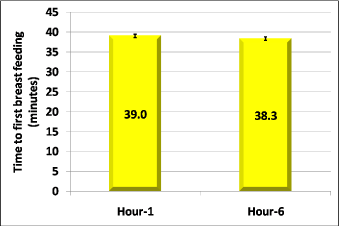
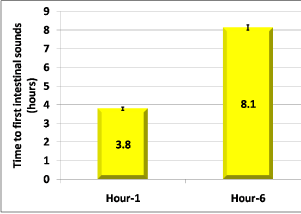




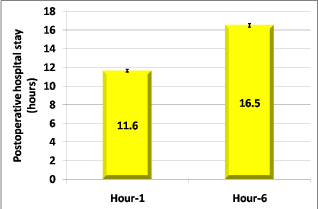
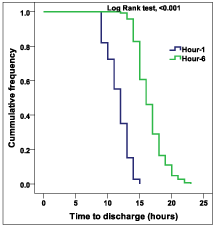
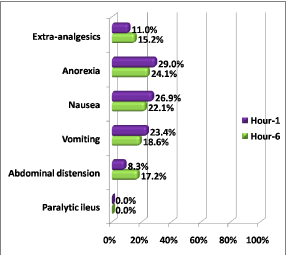

Sign up for Article Alerts